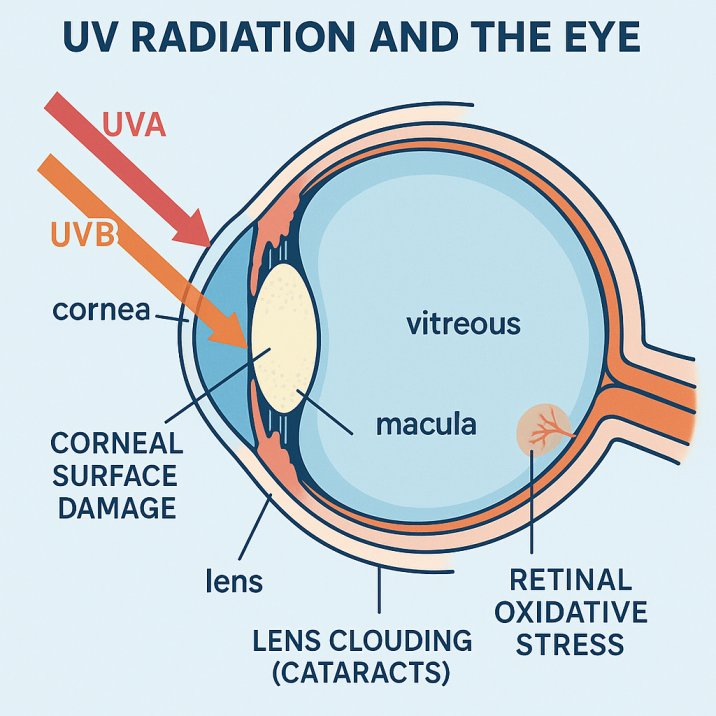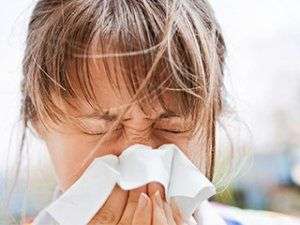Protect Your Eyes from UV Damage – Expert Seattle
Bottom Line: UV radiation poses serious long-term risks to your eyes, including cataracts, macular degeneration, and cancer. Even in cloudy Seattle, year-round eye protection with quality sunglasses and regular comprehensive eye exams at Cannon EyeCare can preserve your vision for life.
Summer may be Seattle’s most beautiful season, but even our famously overcast skies can’t completely shield your eyes from harmful ultraviolet radiation. Whether you’re hiking Mount Rainier, cycling the Burke-Gilman Trail, or simply walking through University Village, your eyes face invisible threats that accumulate over time. At Cannon EyeCare, we’ve seen how UV damage affects our patients, and we’re here to help you understand the risks and protect your precious vision.
Understanding UV Radiation: The Invisible Threat to Your Eyes
Ultraviolet radiation is electromagnetic energy invisible to the human eye, categorized into three types based on wavelength. UVA rays (315-400 nanometers) penetrate deepest into eye tissues, while UVB rays (280-315 nanometers) cause more immediate surface damage. Earth’s ozone layer largely filters UVC rays, though they’re present in artificial sources like welding equipment.
Here’s what makes UV radiation particularly dangerous for your eyes: unlike your skin, which can develop protective pigmentation, your eyes have limited natural defense mechanisms. The transparent structures of your eyes—cornea, lens, and vitreous—allow UV radiation to penetrate deep into delicate tissues where it causes cumulative, often irreversible damage.
How UV Radiation Damages Eveitacauses Your Eye
Your Eyelids: The Thinnest, Most Vulnerable Skin
Your eyelid skin is the thinnest on your entire body, making it extremely susceptible to UV damage. This delicate tissue experiences dryness, wrinkles, loss of elasticity, and increased cancer risk from UV exposure. Basal cell carcinoma and squamous cell carcinoma frequently develop on eyelids, with some cases requiring extensive surgical intervention.
Corneal Damage: When Your Eyes Get “Sunburned”
Photokeratitis, essentially a sunburn of your cornea, occurs when UV rays damage the eye’s front surface. You’ll experience pain, redness, excessive tearing, and light sensitivity that can last several days. While symptoms resolve, the underlying damage accumulates, increasing your risk of future complications.
Lens Changes: The Path to Cataracts
Your lens absorbs approximately 99% of UV radiation reaching it, protecting deeper structures but paying a steep price. UV exposure accelerates protein breakdown in the lens, leading to cataracts—clouding that impairs vision and requires surgical correction. Research consistently shows that people with higher lifetime UV exposure develop cataracts earlier and more severely.
Retinal Threats: Macular Degeneration and Vision Loss
Though only 1-2% of UV radiation reaches your retina, even this small amount can trigger oxidative stress in the macula, your central vision’s control center. Age-related macular degeneration, a leading cause of vision loss in older adults worldwide, has been linked to cumulative UV exposure throughout life. Current research estimates that nearly 20 million Americans are living with some form of AMD, with projections indicating this number will continue rising as the population ages.
Surface Growths: Pterygium and Pinguecula
UV exposure commonly causes benign growths on the white surface. Pterygium, often called “surfer’s eye,” can grow across your cornea and potentially obstruct vision, requiring surgical removal. Pinguecula appears as yellowish bumps that cause irritation and contribute to dry eye symptoms.
The Seattle UV Reality: Why Protection Matters Year-Round
Many Seattle residents underestimate their UV exposure risk, assuming our cloudy climate provides adequate protection. However, UV rays penetrate cloud cover, and several factors increase your exposure:
Reflection amplifies danger: Snow reflects up to 80% of UV rays, water reflects 8-10%, and concrete reflects 8-12%. Seattle’s waterfront activities, winter sports, and urban environment create multiple reflection sources.
Seasonal intensity varies: Seattle’s UV index peaks at 9+ during July summer months, requiring extra precautions during midday hours. Even winter months maintain UV levels that can cause cumulative eye damage.
Altitude increases exposure: Popular hiking destinations like Mount Rainier and the Cascades expose you to higher UV levels—radiation intensity increases approximately 10% for every 3,000 feet of elevation gain.
Children Face Special Risks: Starting Protection Early
Children’s eyes are particularly vulnerable to UV damage because their larger pupils and more transparent lenses allow more radiation to penetrate deeply. Current research indicates that approximately 25% of a person’s lifetime UV exposure occurs before age 18, making early protection crucial.
Young eyes lack the protective yellowing that develops with age, meaning UV rays reach their retinas more easily. This early exposure sets the stage for adult-onset conditions like cataracts and macular degeneration, making childhood UV protection an investment in lifelong vision health.
Recent Scientific Evidence: What Research Reveals
Study 1: Histopathological Effects of UV on Ocular Structures
A comprehensive 2020 literature review published in the Photodiagnosis and Photodynamic Therapy journal examined UV radiation’s effects on animal models. Researchers found that increased UVB exposure penetrates deeper through corneal layers, damages antioxidant protective mechanisms, and causes injury throughout the eye. The study confirmed that both acute high-dose and chronic low-dose UV exposure cause measurable histopathological changes in corneal, lens, and retinal tissues.
Study 2: Public Awareness of UV Eye Protection
Research published in the Healthcare journal in 2022 surveyed 1,331 participants about UV radiation awareness and protective behaviors. Despite 97% awareness of UV radiation’s existence, only 51% demonstrated adequate knowledge about eye protection methods. The study revealed critical gaps in understanding how UV-protective eyewear prevents disease and why protection is especially important for younger individuals.
Study 3: Chesapeake Bay Watermen Epidemiologic Study
Johns Hopkins researchers conducted landmark research examining 838 watermen working on Chesapeake Bay, where high UV exposure and water reflection create ideal conditions for studying radiation effects. The study established clear links between quantified UV-B exposure and cortical cataract development, while demonstrating that simple protective measures like wearing spectacles or hats effectively reduce exposure and disease risk.
Choosing the Right UV Protection: Beyond Dark Lenses
Effective eye protection requires more than grabbing any pair of dark sunglasses. Here’s what matters:
UV Blocking Capability
Look for sunglasses labeled “UV400” or “100% UV protection” that block both UVA and UVB radiation. Darkness doesn’t indicate protection level—cheap dark lenses without UV coating can increase damage by causing pupil dilation while offering no filtering.
Frame Style and Coverage
Wraparound frames or large lenses provide superior protection by blocking UV rays from entering around the sides. Wide-brimmed hats add another layer of defense, reducing overall eye area exposure by up to 50%.
Lens Material and Quality
Polycarbonate and Trivex materials offer impact resistance for active lifestyles while providing excellent UV protection. These materials are particularly important for sports, outdoor work, and children’s eyewear.
Prescription Options
Both clear prescription glasses and contact lenses can include UV-blocking coatings or materials. However, contact lenses protect only the area they cover—you still need sunglasses to protect your eyelids and surrounding skin.
Professional Eye Care: Your First Line of Defense
Regular comprehensive eye exams at Cannon EyeCare serve as your primary defense against UV radiation damage. During your examination, Dr. Mark and Dr. Miranda Cannon use advanced diagnostic technology to detect early signs of UV-related damage, including:
Corneal changes: Specialized imaging reveals surface irregularities and early photokeratitis damage before symptoms appear.
Lens examination: Detailed lens evaluation identifies early cataract formation, allowing for monitoring and treatment planning.
Retinal photography: High-resolution retinal imaging documents macular changes and helps track progression of UV-related retinal damage.
Comprehensive health screening: UV radiation exposure often correlates with other health risks, and our thorough examinations help identify systemic conditions affecting your eyes.
Seattle-Specific Protection Strategies
Living in the Pacific Northwest presents unique UV protection challenges and opportunities:
Water Activities
Seattle’s abundant lakes, Puget Sound, and nearby ocean create high-reflection environments. Whether kayaking Lake Washington, sailing, or beachcombing, always wear wraparound sunglasses and consider sport-specific eyewear designed for water activities.
Winter Sports
Skiing and snowboarding at Crystal Mountain, Snoqualmie Pass, or other regional destinations expose you to intense reflected UV radiation. Snow reflects up to 80% of UV rays, creating a “double exposure” effect requiring premium protection.
Urban Reflection
Downtown Seattle’s glass buildings, concrete surfaces, and waterfront areas create multiple reflection sources. Even routine activities like walking through Pike Place Market or University Village benefit from consistent UV protection.
Gardening and Outdoor Work
Seattle’s gardening culture means many residents spend extended time outdoors during the growing season. Prolonged exposure during yard work, landscaping, or outdoor hobbies requires consistent protection, especially during peak UV hours (10 AM – 4 PM).
The Cannon EyeCare Approach: Comprehensive, Personalized Protection
At our University Village and Pike Place Market locations, we understand that effective UV protection requires personalized solutions. Dr. Mark Cannon’s expertise in dry eye management often reveals how UV damage compounds other eye health issues, while Dr. Miranda Cannon’s comprehensive approach ensures every patient receives education about prevention strategies.
Our advanced diagnostic equipment allows us to detect UV damage in its earliest stages, often before patients experience symptoms. We work with you to develop protection strategies that fit your lifestyle, whether you’re a technology professional spending time outdoors, a parent managing family eye health, or an active outdoor enthusiast.
Comprehensive UV Protection Planning
During your examination, we assess your risk factors, including age, lifestyle, occupation, and recreational activities. We then develop customized protection recommendations covering:
- Prescription sunglasses options tailored to your vision needs
- Sport-specific eyewear for your activities
- Daily UV protection strategies for work and commuting
- Family protection planning for children and teens
- Workplace safety considerations for outdoor professions
Beyond Sunglasses: Complete UV Protection Strategy
Effective UV protection extends beyond eyewear to encompass lifestyle modifications and awareness:
Timing Matters
Avoid outdoor activities during peak UV hours (10 AM – 4 PM) when possible. In Seattle’s summer months, this means planning outdoor activities for early morning or evening hours.
Medication Awareness
Certain medications increase UV sensitivity, including antibiotics, blood pressure medications, and antihistamines. If you take these medications, discuss enhanced protection strategies with our team.
Workplace Considerations
Outdoor workers, including construction professionals, landscapers, and delivery personnel, face occupational UV exposure requiring specialized protection strategies and regular monitoring.
Annual Monitoring
UV damage accumulates slowly and often without symptoms. Annual comprehensive eye exams allow us to track changes over time and adjust protection strategies as needed.
Taking Action: Your Next Steps for Eye Protection
Protecting your eyes from UV radiation requires immediate action and long-term commitment. Here’s how to start:
Schedule a comprehensive eye exam at Cannon EyeCare to establish baseline measurements and assess any existing UV damage. Our advanced diagnostic equipment provides detailed documentation of your current eye health.
Invest in quality UV protection appropriate for your lifestyle and activities. We’ll help you select eyewear that provides adequate protection while meeting your visual and aesthetic needs.
Develop consistent habits around UV protection, making sunglasses and hats as routine as sunscreen application. Remember that UV exposure occurs year-round, even on cloudy days.
Educate your family about UV risks and establish protection habits early, especially for children who face the highest lifetime exposure risks.
Plan regular monitoring to track changes over time and catch UV-related problems in their earliest, most treatable stages.
Your Vision Deserves Expert Protection
UV radiation poses real, measurable risks to your eye health that increase with every unprotected exposure. In Seattle’s unique environment, where water reflection, altitude changes, and year-round outdoor activities create diverse UV challenges, professional guidance becomes essential.
At Cannon EyeCare, we combine Midwestern warmth with Pacific Northwest expertise to provide comprehensive UV protection strategies. Our husband-and-wife team understands that protecting your vision requires both immediate solutions and long-term planning.
Don’t wait for symptoms to appear—UV damage often progresses silently for years before affecting your vision. Schedule your comprehensive eye examination today at our University Village location or Pike Place Market office to begin protecting your eyes for a lifetime of clear, comfortable vision.
Your eyes deserve the same protection you give your skin. Let Cannon EyeCare help you see everything you need to see, clearly and safely, for years to come.
FAQs
-
UV radiation is invisible sunlight energy that can damage eye tissues, increasing the risk of cataracts, photokeratitis, and other vision problems over time




